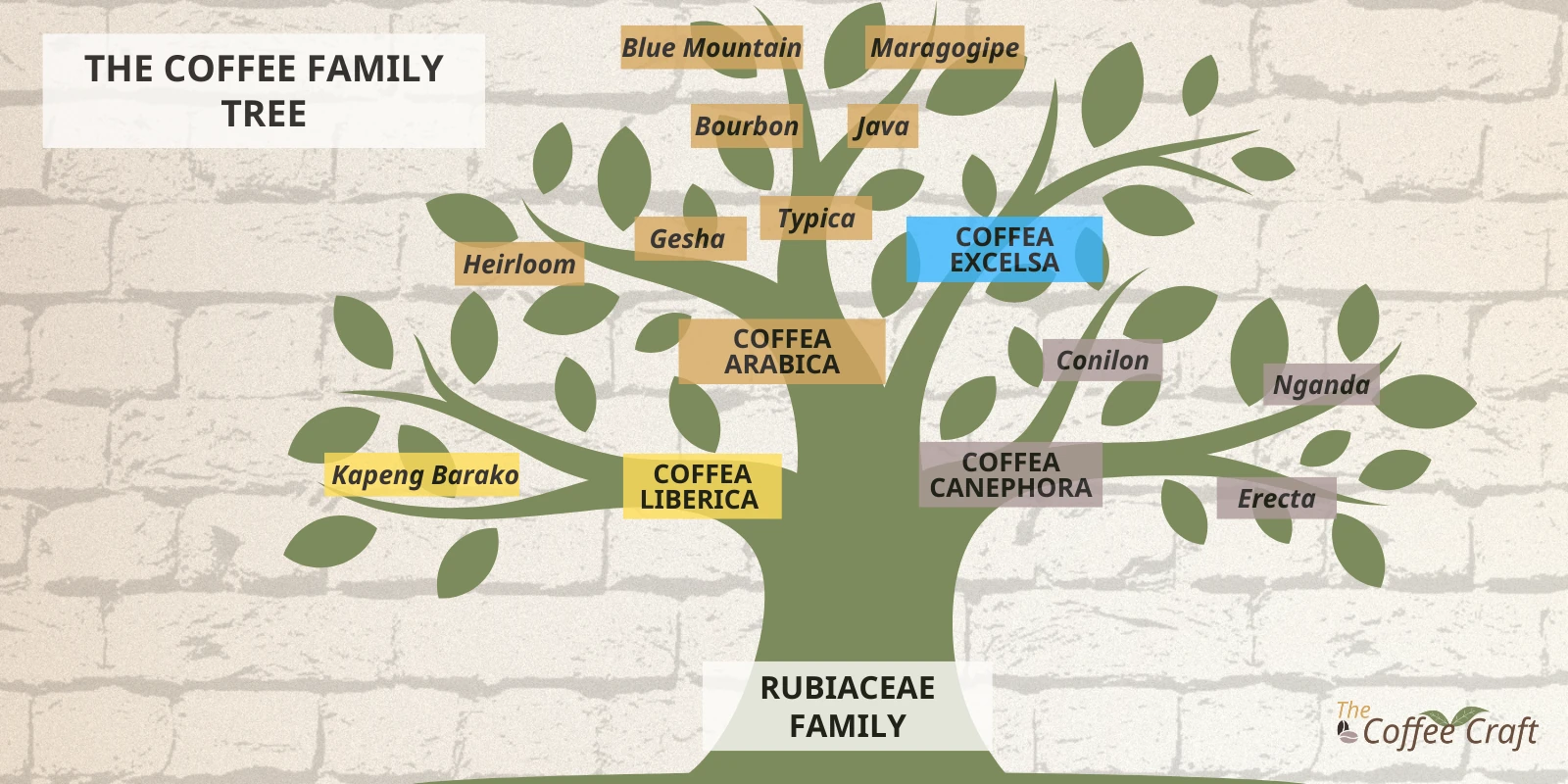Coffee trees are the foundation of one of the world’s most beloved beverages. Yet, many wonder, what exactly is a coffee bean, and how does it form? A coffee bean is the seed found inside the fruit of a coffee tree, commonly known as a coffee cherry. Cultivated for its rich flavor and aroma, coffee beans are at the heart of a global industry that influences economies, cultures, and daily life.
In this article, we’ll explore the fascinating life of a coffee tree—from its origins and key species to the challenges of cultivation and its critical role in the global coffee industry.
Table of Contents
What Is a Coffee Tree?
Origins and Classification
The coffee tree belongs to the Coffea genus, part of the Rubiaceae family, and is native to tropical Africa, Madagascar, and parts of Asia. With over 120 species, the coffee tree is central to global coffee production.
- Scientific Name: Coffea
- Family: Rubiaceae
- Native Regions: Africa, Madagascar, and Tropical Asia
Physical Features of a Coffee Tree
Coffee trees are evergreen shrubs or small trees that thrive in tropical climates. They possess distinct characteristics:
- Leaves: Glossy, dark green, and oval-shaped with wavy edges.
- Flowers: White, star-shaped, and fragrant, blooming in clusters along leaf axils.
- Fruits: Coffee cherries that ripen from green to red (or sometimes yellow or purple), each containing one or two seeds—coffee beans.
Key Coffee Species: An Overview
Major Coffee Species
Four main species dominate the global coffee industry, each with unique flavor profiles and cultivation needs:
| Species | Common Name | Origin | Flavor Profile | Global Production Share |
|---|---|---|---|---|
| Coffea arabica | Arabica | Ethiopia, South Sudan | Smooth, mild, aromatic | 60–70% |
| Coffea canephora | Robusta | Central/West Africa | Strong, bitter, earthy | 30–40% |
| Coffea liberica | Liberica | Liberia, West Africa | Smoky, fruity, bold | Niche |
| Coffea excelsa | Excelsa | Central Africa | Tart, fruity, complex | Primarily blending |
Global Significance
These species are vital to economies in major coffee-growing regions such as Latin America, Africa, and Southeast Asia. Arabica dominates in regions with cooler temperatures and higher altitudes, while Robusta thrives in warmer, lower altitudes.

From Seed to Bean: How Coffee Trees Grow
Ideal Growing Conditions
Coffee trees thrive in specific conditions, tailored to the species:
- Temperature:
- Arabica: 15–25°C
- Robusta: 20–30°C
- Soil: Well-drained, nutrient-rich soil.
- Shade: Often intercropped with larger trees to maintain ecological balance and protect against direct sunlight.
Growth Stages of a Coffee Tree
- Planting and Germination: Coffee seeds are planted in shaded nurseries and germinate over several weeks.
- Flowering and Cherry Development: After 2–4 years, coffee trees bloom, producing fragrant flowers that mature into cherries.
- Harvesting and Bean Extraction: Ripe cherries are hand-picked or mechanically harvested. Beans are extracted, processed, and dried.
Challenges in Coffee Cultivation
Common Pests and Diseases
Coffee cultivation faces numerous threats, including:
- Coffee Leaf Rust (Roya):
- Cause: Fungus (Hemileia vastatrix).
- Impact: Orange lesions on leaves, reducing photosynthesis and yield.
- Historical Impact: Devastated Sri Lanka’s coffee industry in the 19th century and caused widespread damage in Central America.
- Coffee Berry Borer (Broca):
- Cause: Beetle (Hypothenemus hampei).
- Impact: Larvae burrow into coffee beans, diminishing quality and yield.
- Spread: Originally from Africa, now present in most coffee-growing regions.
Climate Change Impacts
Rising temperatures and unpredictable weather patterns are shrinking viable coffee-growing regions. Sustainable farming practices, such as shade-grown coffee and agroforestry, are vital to mitigating these effects.
The Role of Coffee Trees in Culture and Economy
Economic Importance
Coffee is the second-most traded commodity worldwide after oil, driving the economies of many developing countries. Brazil leads global production, exporting over 2 billion pounds annually. Vietnam, Colombia, and Ethiopia also play significant roles.
Cultural Significance
Beyond its economic value, coffee holds a cherished place in cultures worldwide. From Ethiopian coffee ceremonies to bustling coffeehouses in Europe and the Americas, the coffee tree’s impact extends far beyond the farm.
Conclusion
Coffee trees are more than just plants—they are the lifeblood of an industry that touches millions of lives. Their diversity, from species like Arabica and Robusta to the niche Liberica and Excelsa, reflects coffee’s complexity and cultural significance.
As climate change and pests threaten coffee cultivation, sustainable farming practices and innovations are essential to securing the future of this beloved crop. By understanding the journey of coffee trees from seed to bean, we gain a deeper appreciation for the beverage that fuels our days and connects us across cultures.
